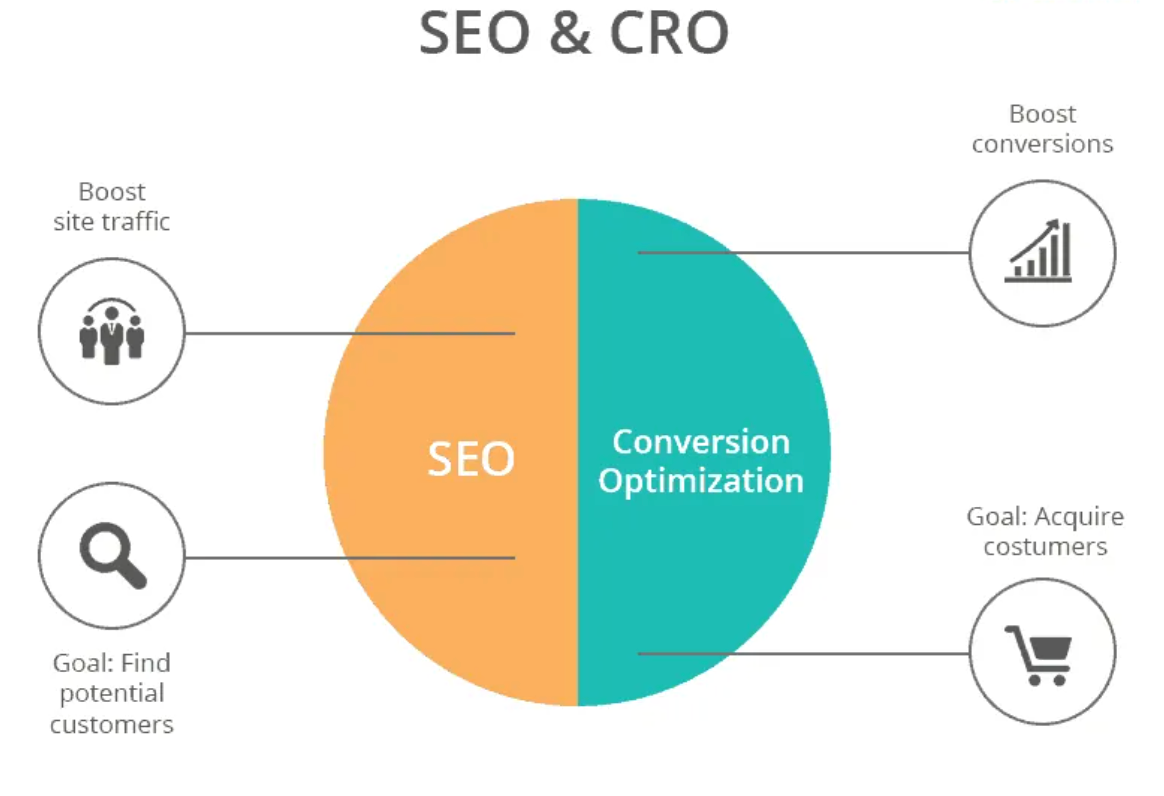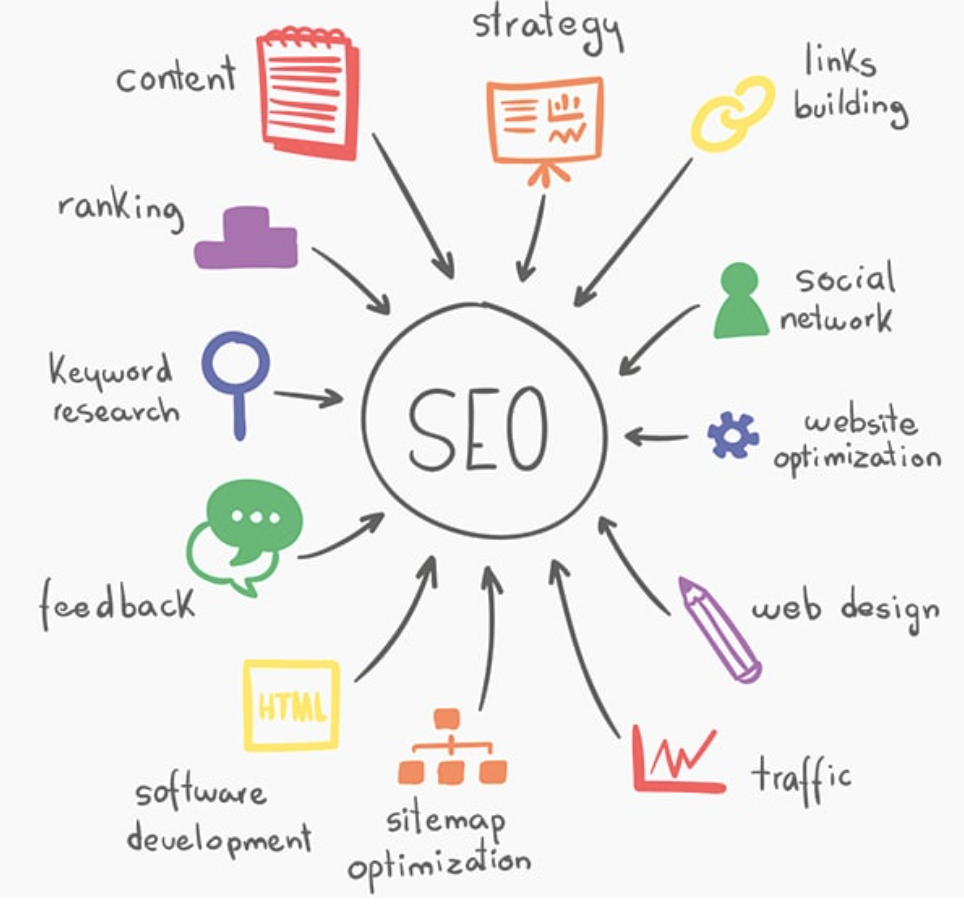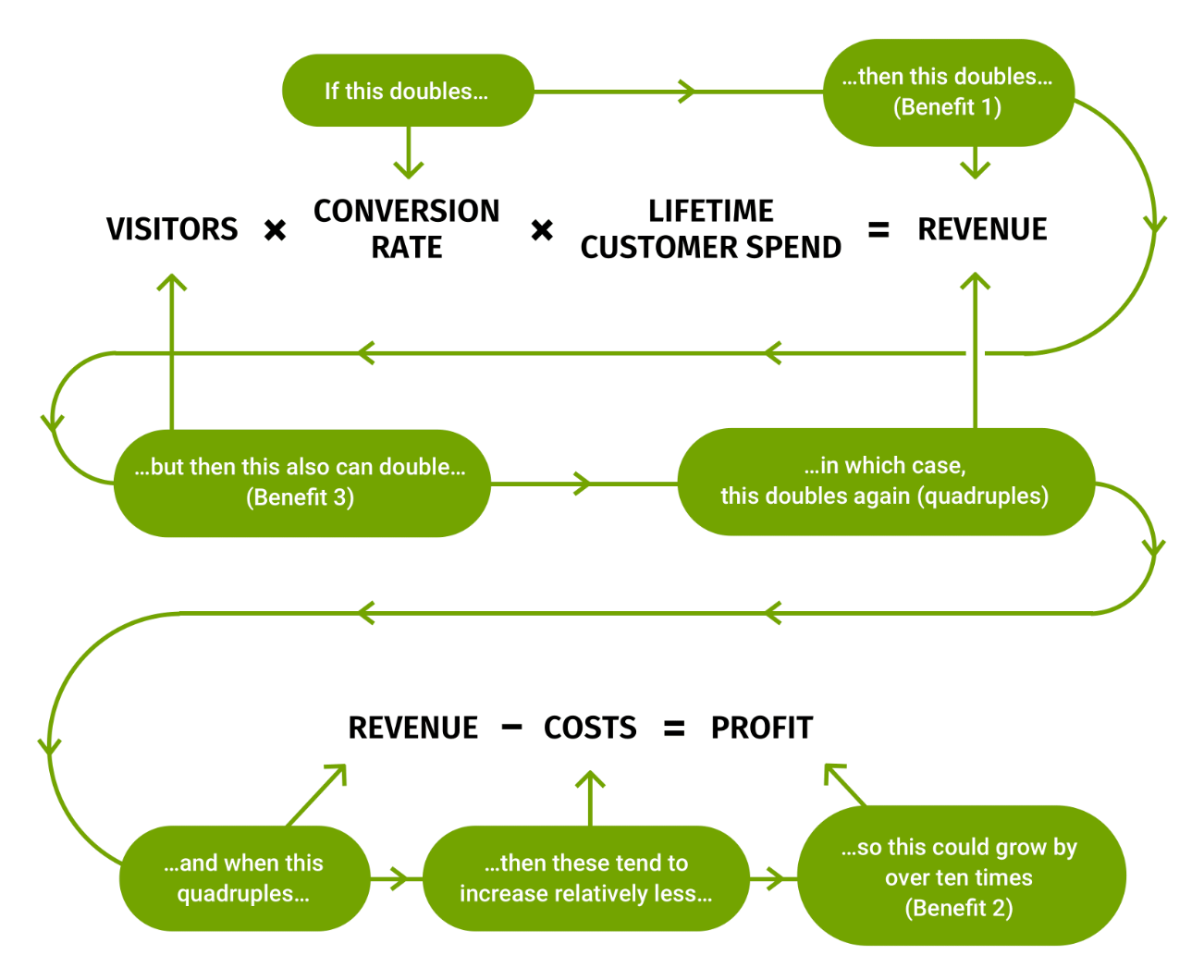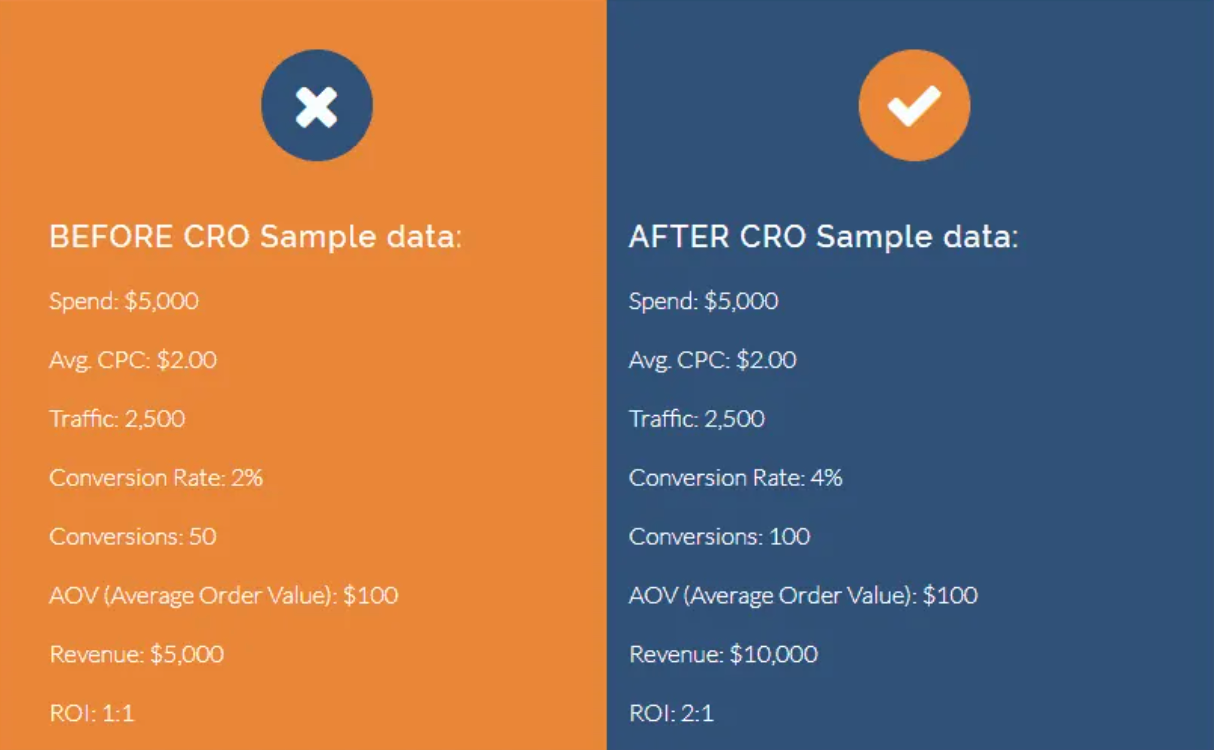SEO focuses on boosting the traffic to your site, and CRO aims to convert that traffic into customers. Read our blog to smash both SEO and CRO for your business.
Let's say you’ve worked tirelessly on your online store, the advertising is on point and your website is flawless.
You’ve waited day after day for business to pick up, and then one day, you finally see your site traffic skyrocket right before your eyes.
Imagine the sense of accomplishment, the exhilaration. You swing the lid of your laptop open with great enthusiasm, log into analytics and then the disappointment hits you like the wet monsoon.
Your traffic is taking flight, but nobody is buying anything. You're not selling. You have zero conversions.
Too often this is the story of electronic commerce stores across the world. The good news is that your online business does not need to be another statistic.
It’s an amazing feeling seeing a massive surge in your website traffic and one that we all will never get tired of seeing, so in this blog post we are going to discuss all things SEO and CRO, including which you should focus on right now.
A Brief Overview
SEO and CRO are two different but complementary aspects of online marketing.
SEO is the process of optimising a website for Google search, while CRO is the process of improving conversion rates - that is, getting more visitors to complete desired actions on a website, such as signing up for a newsletter or making a purchase.
While they are two separate disciplines, SEO and CRO can work together to improve overall domain results.
For example, improving conversion rates can help to boost traffic levels and vice versa. Additionally, many of the same techniques can be used for both SEO and CRO purposes.
Previously, SEO was considered the holy grail marketing technique for business success; but really it doesn't matter what type of business you own, if you aren’t converting then you’re stuck in a boat without a paddle.
The truth is this, if you want to see sell products and see an increase in revenue, you need to master both.

Search Engine Optimisation (AKA: SEO)
Search engine optimisation, or SEO, is the process of improving the visibility of a website in search engine results pages (SERPs).
This can be done by optimising the website for certain keywords, improving the website's content, and building backlinks to the website from other websites.
Simply put, SEO is all about writing quality content and displaying it in an informative manner. When you achieve the above (ie: high quality content), Google rewards you by offering an increase in organic traffic.
Google's Algorithm
Setting the initial investment in SEO aside, once it's up and running, there are no additional costs to you except time spent in maintaining the high-quality content and keeping it up to date.
While it sounds rather simple, it is a skill that requires nurturing and it is a time-consuming process.
The best place to start is by understanding what matters to search engines in the grand scheme of things.
These are:
-
The right words. Using the right keywords, in the right places, at the right time will increase your ranking in search engine results.
-
Headings and titles. When you are thinking of page and header titles, think hard about what it is you want to say. They need to be effective and precise. This way when search engines are crawling your page, they know what your page is about.
-
Inbound and outbound links. Search engines will determine the authenticity of your site based on the number of genuine inbound and outbound links you have. The more you link, the more credible your page is. They may be search engines and not people, but they aren’t stupid, they will spot a fake or paid link from a mile away. See our blog post on backlinking for more information.
-
Notoriety. Search engines care about website authority now more than ever. Authority is a combined measure of intangible things like trust, security, industry expertise and demand. Authority is established by site traffic, the number of inbound and outbound links, shares and engagement on social media and so much more.
The Key Components of SEO
So now that we know what search engines care about, let's look at the key components of SEO and how they work to essentially “impress” search engines.

Making Content for SEO and Visitors
Content is any and all text and images that you create and include on your site. Essentially, these are the things that your consumers will engage with or look at when they browse your website.
With millions of pieces of content being created every single minute online, most of it falls short of Google’s high SEO standards.
Creating content isn’t as simple as throwing a bunch of words on a page and calling it a day. The content has to be the good stuff - as the saying goes, content is king.
A few things can be done to improve content for SEO purposes:
-
High quality content: You need to develop something that buyers want to read, and something that they feel empowered from. To really establish your content marketing, look into Big Content.
-
Utilise keywords to your advantage: All of those beautifully crafted elements in content mean nothing, if half of it is “fluff” without substance. Dig deep, be strategic and don’t forget to spell things correctly! While once the “in thing”, we heavily avoid keyword stuffing now as this is punished by search engines. This topic is massive, do some further reading if you're interested.
-
Novelty: You wouldn’t serve a cold meal to a guest, would you? The same should be applied to your website etiquette in terms of SEO. Ensure you are producing fresh material, regularly, to avoid going stale. A great way to achieve that minty fresh feeling is blogging, taking to social media, creating vlogs and re-working landing pages every so often.
Engineering
You might now be thinking, “did I click the wrong blog?” but hear us out. Engineering relates to more than just the construction industry, because it also plays a vital role in website design.
Engineering encompasses everything from the technical running of the site, to its design features and aesthetic. If the site is too slow, visitors will bounce. If the UX and UI are unappealing, you’re setting yourself up for failure.
The highest performing websites take these pain points into account and design with them in mind, which help them to increase conversions.
Consider these following pain points:
-
Site organisation: This matters to search engines, a lot, as it heavily impacts user experience. Ensure that your site layout is appropriate and that site speed is within an acceptable range. If you think about what you'd want to see in a website you are visiting, it's likely something along the lines of - fast loading times, smooth content devoid of grammatical errors, content you can scan and effortless navigation.
-
Aesthetics. We aren't living in the 90s anymore; and while Space Invaders was a lot of fun, you certainly wouldn't describe it as an ultra visually appealing game. Lush, minimalist and sleek designs are a crowd pleaser; however it is important to evolve with website trends, so that you stay ahead of your competitors and meet your users expectations year on year.
Optimising The Technology
Optimising the technology you use helps to ensure you have no bloat and your website loads fast. It also will let you optimise your web pages so they are more SEO friendly.
If your HTML practice is poor, search engines simply won't know how to rank you while crawling the site. If you are utilising a WordPress site, there are simple techniques you can adopt that will maximise your SEO.
Busy SEO versus Effective SEO
Think about this in terms of two different employees.
The first employee is a boaster and cares only about how they come across to management. They’ll bang on about how much work they’ve done, how fast they were and how they’re the best employee you’ve ever had. But, their attention to detail is lacking and they don't really care about your business.
The second employee is a little more soft spoken. They internally care about how they’re perceived, but they don't let this control how they behave. They focus more on raw output and let the work they do speak for itself with little bragging.
In other words, if you’re utilising busy SEO, then you are somewhat blinded by the pretty numbers that reflect page views or subscribers - vanity measures.
You aren't focused on the stuff that will drive the business forward, which would be the case for effective SEO. Keeping return on investment in mind, effective SEO really does take the whole picture into account.
Conversion Rate Optimisation (AKA: CRO)
Conversion rate is the statistic of measuring how many users visit your website and become paying customers. It’s calculated by dividing the number of site visitors by the number of visitors that have taken action.
Conversion rate is one of the most crucial indicators of how well your website is doing, and therefore your business too. It’s an important statistic as it can tell you what parts of your website are doing more harm than good, and also tells you what content works for your target audience and what doesn’t.
You can improve conversion rate in a number of ways, from use of certain keywords to improving website content and backlinking. The most important thing is being across your website and online store in terms of metrics and performance. As the Power Law of CRO states, benefits can be doubled, tripled and even quadrupled if CRO is managed effectively.

Collecting Data
Find out what's working and not working for your site.
Google Analytics will be able to highlight why your customers are dropping like flies, and where it's happening. It might be a case of high numbers of cart abandonment, and then you would need to look into optimising the checkout process by including a guest checkout, streamlining the process and offering multiple methods of payment, for example.
Customer surveys are also a great source of data, however these can be seen as cumbersome.
Usability Testing
Small changes made to the landing page can result in massive increases in revenue.
A/B testing is one of the best ways to test web page usability, and thankfully, you don't need to be a code monkey to do it.
A/B testing involves control and test groups. Consider testing headlines, calls to action, form length, locations and visual elements. Free online tools like Google Content Experiments are simple to use and effective too.
Below is a great example of how testing works in the real world.

What Are The Key Differences?
Before we dive into how SEO and CRO can work harmoniously, its important to understand how they are different.
The key distinguishing factors are:
- Search engine optimisation is focused on improving a website's visibility in search engine results pages, while conversion rate optimisation is focused on improving a website's ability to convert visitors into customers.
- Search engine optimisation focuses on improving a website's ranking in search engine results pages, while conversion rate optimisation focuses on improving the effectiveness of individual webpages.
- Search engine optimisation is a longer-term strategy, while conversion rate optimisation can be more short-term in nature.
- Search engine optimisation requires an understanding of how search engines work, while conversion rate optimisation does not.
- Search engine optimisation is more technical in nature, while conversion rate optimisation is more creative.
Working In Sync
Although different, it is possible for both SEO and CRO to work in harmony - in fact, it is highly encouraged.
One drives the other, and vice versa. The best ways to achieve this are:
-
Don’t overcomplicate things. Complicating your site puts tension on content, and therefore tension on your conversions. Keep it nice and simple by reducing links (quality over quantity), show off your humanity by using social proof, ensure ease of navigation and remove all the fluff.
-
Ensure your headlines are precise and smart. Get to the point and avoid the use of inappropriate keywords.
-
Optimise the site, including page load times. This speaks for itself, if you want SEO and CRO to work hand in hand, you need to give the customers a reason to visit you in the first place. Don't blow it with a slow page.
The Bottom Line
Ideally, optimising both marketing features simultaneously is the way to go. But if you are stuck on where to start, get knees deep in your site analytics to uncover the issues at hand. This should push you in the right direction.
It's imperative to remember that SEO and CRO really do go hand in hand. The greatest effort is one made together. When you consider conversion rate optimisation, you must also reflect on efforts made to drive organic traffic to your site in the first place. And without converting users into loyal, buying consumers; organic traffic is almost a moot point entirely.
It might take a while to get the balance right, but in the end if you let SEO and CRO collaborate rather than compete, you’ll see massive improvements in your online traffic and return on investment.
Alternatively, if you don't have the time or patience to get that balance right, we do.
Contact us and we'll literally do the hard yards for you.